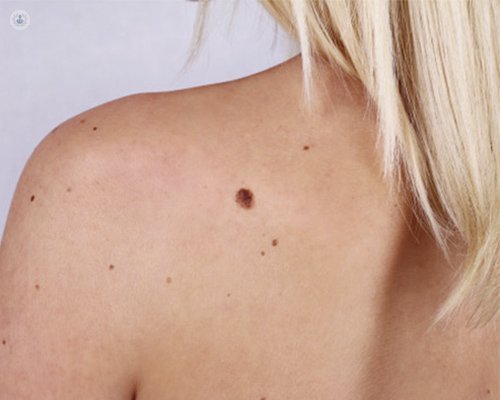Watch your moles with the ABCDE rule
Written by:Melanocytic moles or nevus are benign proliferations of melanocytes in the skin. That is, they are benign tumors formed by the cells that produce the pigment of the skin. They may appear congenitally, that is, at birth or when we are very young, or later, conditioned by a genetic predisposition but also in relation to sun exposure.
Types of moles
There are many types of moles and classifications. The most common are:
• Congenital melanocytic nevus, which we have since birth.
• Acquired melanocytic nevus, which appears throughout life, usually smaller in size than the congenital.
• The intradermal melanocytic nevus is the bulging mole, which people say colloquially "a mole that has become a wart" and is usually an injury that aesthetically troubles patients, but it is benign.
• Blue nevus is a mole that is somewhat deeper in the skin and that is why it is seen in that color.
Before a mole that we have doubts of the type that can be or if it is benign or malignant, the best thing is to consult with a specialist in Dermatology .
How often do you have to check for moles?
If there is no history of skin cancer, they should be reviewed each year. If there has been a history of skin cancer in the patient or family, it will be the dermatologist who needs to know how much of the moles should be checked.

Prevention of moles
Sun protection is the fundamental care that we must have with our skin. Use a protection factor of between thirty and fifty, avoid the hours of greater solar radiation (from 12 to 16h), protect the eyes with sunglasses, use cap and put us in the shade are measures that we must do, especially in summer .
The ABCDE rule in the detection of moles
Regarding the surveillance of moles, the ABCDE rule can help us detect potentially malignant lesions, that is, they may not be good.
• The A is asymmetric; Benign lesions tend to be more rounded and symmetrical.
• The B is bordered; A regular edge indicates that the injury is good whereas if the edges are irregular is an injury that, at least, should be valued.
• C is colored; A lesion of several colors or very black should be evaluated because it is atypical; Benign lesions are usually of a single homogeneous color, usually light brown.
• D is diameter, lesions measuring more than 6 mm (unless we have had them from small and grown with us) should be monitored.
• And the E is of evolution, that is, that they change and grow.



